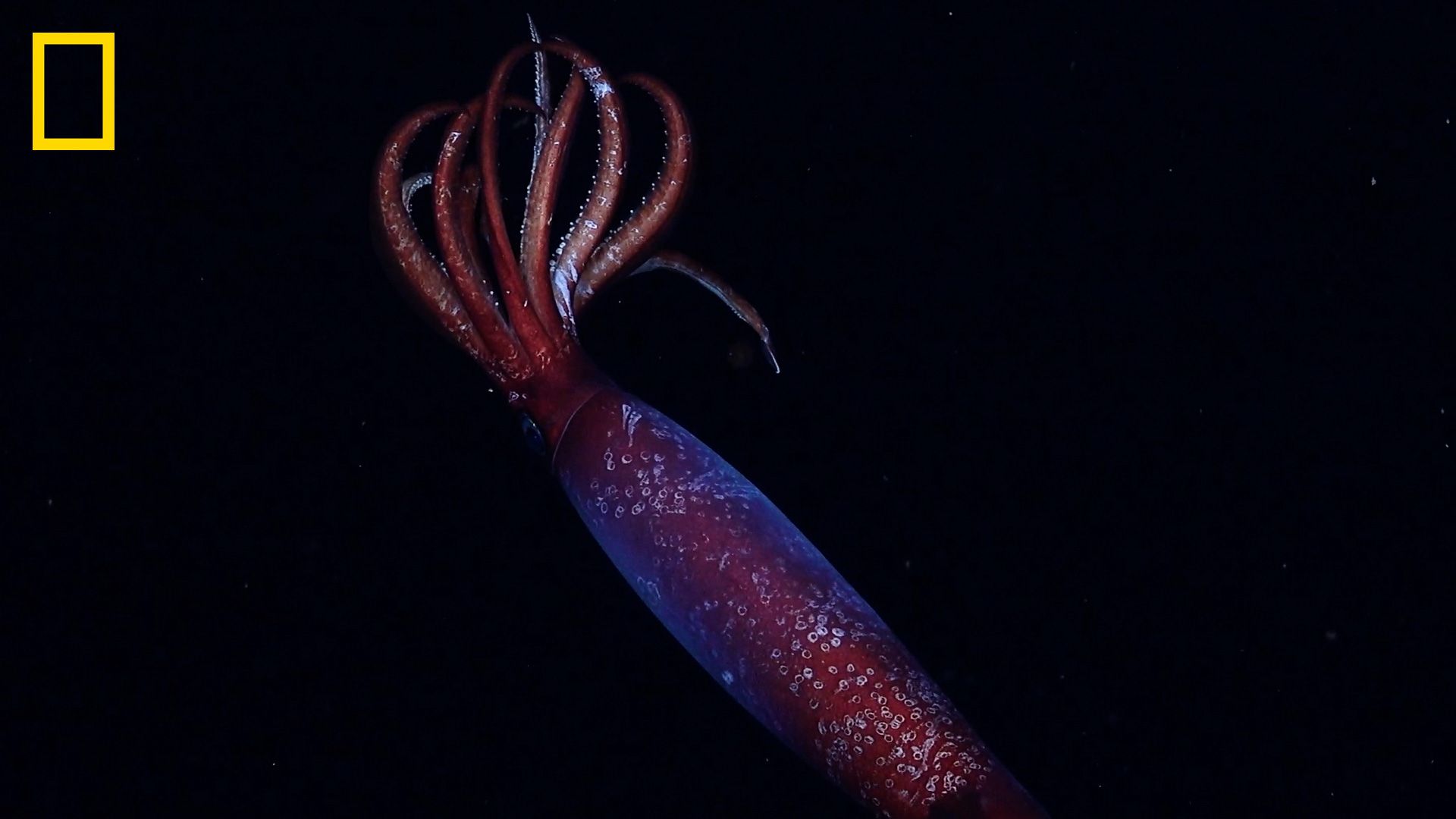First Living Sighting of Antarctic Gonate Squid Captured Off the Coast of Antarctica

In a groundbreaking discovery, researchers have documented the first-ever sighting of a living Gonatus antarcticus, a species of deep-sea squid, during the National Geographic and Rolex Perpetual Planet Expedition. This remarkable event marks a significant milestone in marine biology, as it unveils a creature that has largely remained a mystery to scientists and enthusiasts alike.
On December 25, 2024, the team observed this elusive squid drifting gracefully in the pitch-black waters of the ocean's midnight zone, located at a staggering depth of 7,060 feet (2,152 meters) below the ocean's surface. The footage was captured using a remotely operated vehicle (ROV), deployed from the Schmidt Ocean Institute’s research vessel, the R/V Falkor (too).
As the footage was sent to Kat Bolstad, the head of the Lab for Cephalopod Ecology and Systematics at Auckland University of Technology in New Zealand, she quickly confirmed its identity as an Antarctic gonate squid. Bolstad stated, This is, to the best of my knowledge, the first live footage of this animal worldwide.
This statement underscores the rarity and significance of this sighting.
Scientists have been aware of the existence of the Antarctic gonate squid for over a century; however, prior to this observation, they had only encountered deceased specimens. These were either caught in fishing nets or identified through beaks found preserved in the stomachs of predatory animals. The sighting of a living squid in its natural habitat offers an unprecedented glimpse into the life of this enigmatic species.
The squid was recorded in the bathypelagic zone, commonly referred to as the midnight zone, which ranges from depths of 3,300 to 13,100 feet (1,000 to 4,000 meters). In this region, sunlight cannot penetrate, leaving the creatures that reside there to rely on bioluminescence for illumination, as noted by the National Oceanic and Atmospheric Administration (NOAA).
When the ROV approached, the squid released a cloud of greenish ink, likely startled by the presence of the bright, large vehicle intruding in its dark environment. The researchers managed to trail the squid for several minutes, employing the ROV's lasers to measure its size. Ultimately, the squid darted away into the expansive darkness, disappearing from view, as reported by National Geographic.
Despite the thrilling encounter, researchers were unable to ascertain the squid's sex or age. However, Bolstad was able to confirm its species based on a distinct characteristic: the presence of a single, prominent hook on the ends of its two longer tentacles. This sighting not only adds to the understanding of deep-sea life but also highlights the importance of continued exploration and research in some of the world's most remote oceanic regions.



























